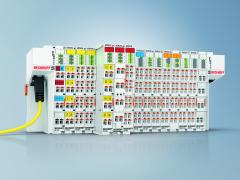The data centre marketplace is facing a conundrum of sorts: on the one hand, operators are investing heavily in infrastructure to meet AI’s growing demands; on the other, it still (often) relies on outdated maintenance methods to manage mission-critical equipment.
But with rising energy demands, talent shortages, stricter sustainability regulations, and mounting downtime risks, change has become non-negotiable. Enter Condition-Based Maintenance (CBM), powered by AI and fast becoming a necessity for ensuring both competitiveness and resilience.
Canninah Dladla, Cluster President for English-speaking Africa at Schneider Electric, explains.

Why traditional maintenance falls short
There’s no doubt that time-based or reactive maintenance models have the potential to expose data centres to unnecessary downtime, inefficient resource use, higher costs, and compliance risks.
Additionally, as AI workloads continue to drive demand for greater computational power and more complex infrastructure, failures in innovative technologies become costly. This is particularly true in sectors such as finance, healthcare, and e-commerce, where outages can cause severe reputational damage and financial loss.
According to Uptime Institute, the average cost of IT downtime ranges from $6 000 to $9 000 per minute, with some outages exceeding $1 million. Talent shortages amplify the risk: half of operators (51%) reported difficulty in finding qualified candidates to fill their job openings, for the third year running. In addition, Uptime Institute estimates, and based on 25 years of data, human error plays a role in more than 66% of data centre outages.
Traditional maintenance typically suffers from three flaws:
- Calendar-based servicing wastes resources and fails to prevent unexpected failures.
- Contracts often cover only narrow equipment sets, not entire systems.
- Technicians may lack the skills or connectivity to manage multi-vendor, multi-site ecosystems.
Why systemic CBM works
AI-driven CBM offers a rounded and proactive solution. For example, by embedding sensors to collect real-time data on temperature, vibration, pressure and wear, CBM continuously monitors equipment health. Predictive analytics then identify issues before they escalate, enabling interventions only when necessary.
This approach reduces downtime, minimises human error, and extends asset lifespans. Over time, CBM systems self-optimise by learning from new data points, creating a cycle of continuous improvement.
Importantly, human judgment remains vital to complement AI insights, ensuring multi-layered decisions in complex environments. CBM offers measurable benefits such as:
- Efficiency and uptime – predictive analytics reduce costs and downtime by 20%. (International Energy Agency).
- Resource optimisation – according to a recent Schneider Electric report, early CBM implementation can result in up to a 40% reduction in on-site maintenance interventions and a 20% decrease in operational costs
- Sustainability – CBM reduces energy waste and extends equipment lifespans, directly supporting carbon reduction targets.
- Reliability – consistent performance and service continuity are maintained, even amid technician shortages.
- Cybersecurity – continuous monitoring identifies anomalies early, reducing vulnerabilities and centralising infrastructure management to shrink attack surfaces.
- Cost Reduction – Compass Data Centres cut costs through AI-powered maintenance, with a shift to CBM leading to a 40% reduction in manual, on-site interventions and a 20% decrease in OPEX.
A strategic imperative
Future-ready data centres demand proactive strategies. Whether designing a new facility or upgrading legacy systems, integrating AI-powered CBM is critical.
For new builds, embedding CBM from the design stage ensures seamless, data-driven operations from day one. For existing facilities, a phased rollout helps mitigate risks while transitioning infrastructure.
With CBM, data centres can evolve into efficient, resilient, and sustainable facilities, ready to harness AI to optimise operations and drive innovation in an increasingly demanding digital world.













